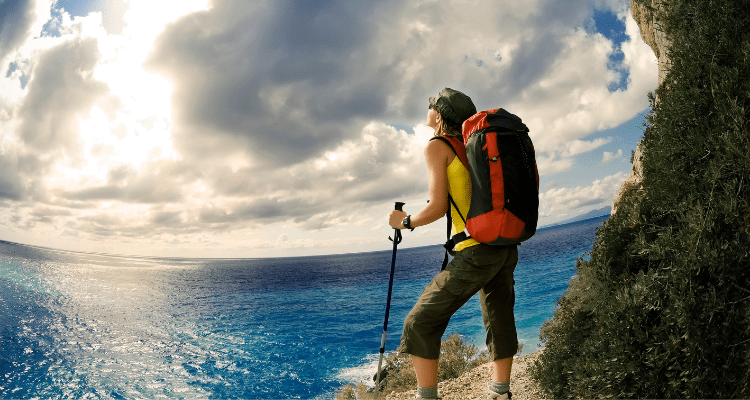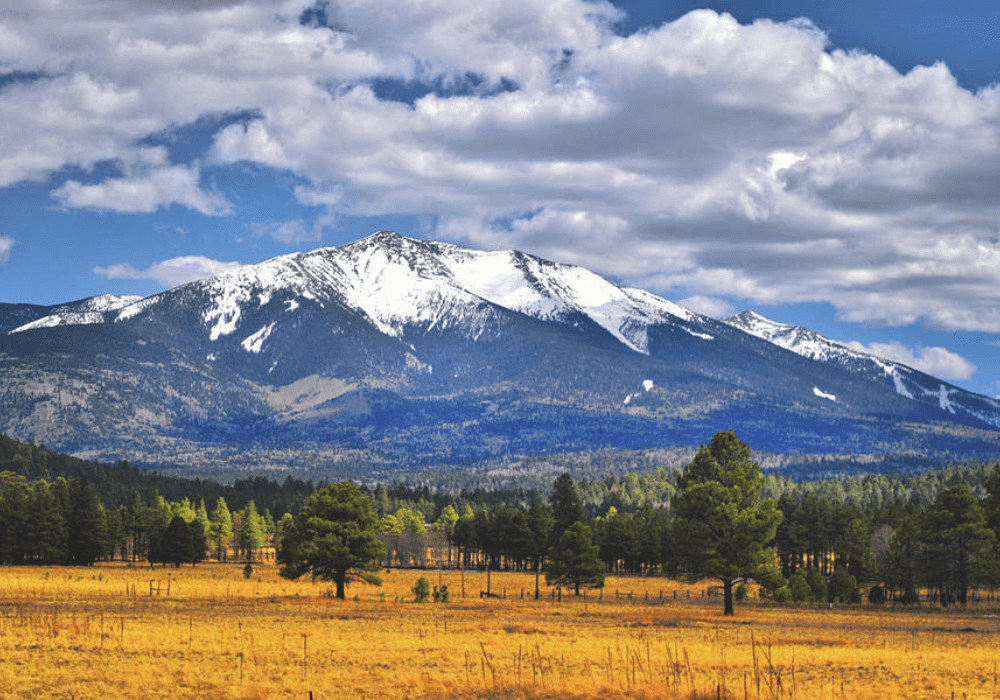
14 Pros & Cons of Hiking with Trekking Poles
Estimated reading time: 7 minutes
Trekking poles are a common sight when you’re hiking on a popular trail.
Some hikers will have one or even two while others none at all.
While they aren’t essential hiking gear, trekking poles give added support and stability.
That said…
Many hikers and backpackers go against the grain and speak against the use of trekking poles.
These differing opinions have even given rise to a scientific review on whether trekking poles help or hinder your hiking experience.
Table of Contents
What Are Trekking Poles?
Trekking Poles: To Use or Not to Use
Should you use trekking poles?
We listed down their pros and cons to help you decide if they’re for you.
If you want some great trekking poles and other trail tested gear, head over to our Adventure Essentials.
Pros of Hiking with Trekking Poles

1. They Help You Balance
Trekking poles help you maintain your balance on tricky terrain by acting as a second pair of legs.
While this seems obvious at first glance, scientists have confirmed it as a fact by having subjects walk across a 10-foot long simulated log. One study found that two trekking poles helped balance when walking with a heavy backpack while only one pole is needed when walking unencumbered.
As such, trekking poles help you stay upright when going up or downhill on loose ground, battling high winds, crossing moving water with a strong current, traversing narrow ridgelines, or trekking snowfields and ice patches.
2. They Save Your Joints and Muscles
Trekking poles give added support and absorb some of the shocks that your joints suffer on every step. This effect is more apparent when you’re going up or down a slope. Their dampening effect is why trekking poles are great if you’re suffering from osteoarthritis or if you’re old or overweight.
Apart from taking the load off your joints, trekking poles also help you stop yourself when going down a slope. This reduces the eccentric muscle contractions that cause microtears in your leg muscles and leave them feeling sore after your trip.
So, if you’re experiencing joint pains, particularly in your knees and ankles, you may want to try using trekking poles on your next hike.
3. They Make You Use Your Arms Which Burn More Calories
Gym bros often tell us to never skip leg day. But, for hikers, every day is leg day. While this gives birth to toned and strong legs, it also means your arm and upper body muscles eventually lag in development, unless you frequently scramble over boulders or go bushwhacking.
Trekking poles make you use your arms as you actively drive them into the ground. This means you’re developing your upper body muscles together with your legs. By keeping your arms busy, trekking poles also prevent your hands from swelling as a result of just having them hang by your side as you ascend a steep slope.
By using both your arms and legs, you’re burning more calories (up to 20% more according to one study) which is great if you’re hiking to lose some weight.
4. They Let You Set a Good Pace
If you’ve never used trekking poles before, you may notice that they seem to make you enter a meditative state. There’s something about keeping the “foot-pole-foot-pole” rhythm that seems to help you move faster.
It’s not just you. Scientific studies have found that subjects indeed tend to walk faster while using trekking poles. This isn’t because you’re propelling yourself forward with your arms, although it may certainly feel like it. Instead, the poles seem to let the subjects adopt a more natural walking gait, with longer and quicker strides, particularly while carrying a backpack or ascending a slope.
What’s interesting is that subjects burned more calories while feeling like they weren’t putting in more effort.
5. They Let You Check for Hazards
If you hike in particularly rugged terrain, you can use your trekking poles to check for hazards.
You can use them to check how strong that sheet of ice is, how deep that brackish pool of water goes, or if that patch of mud is something you can step on or should hop over. Trekking poles let you leave nothing to chance.
6. They Help Ward Off Wild Animals
Apart from natural hazards, trekking poles can also help you ward off wild animals on the trail.
While we do what we can to avoid animals while encroaching on their territory, sometimes it just happens. If you ever encounter a large animal like a bear, you can bang your trekking poles against a tree, a rock, or against each other to make a loud noise to scare it away. You can also swing your poles around above your head to make yourself seem larger.
7. They Can Help You Catch a Ride
If you ever need to hitch a ride into town or vice versa, you can use your trekking poles to attract an oncoming driver’s attention. Your trekking poles will signal that you’re a hiker needing a lift somewhere, which will get you picked up quicker most of the time.
Cons of Hiking with Trekking Poles

1. You Can Rely on Them Too Much
While it has been proven that trekking poles help you keep your balance, some hikers believe that you might rely on them too much. This can be a problem especially when you get to a part of the trail where you can’t use your poles.
This problem is a bit circumstantial, though, and scientific studies have yet to show that long-term trekking pole use adversely affects your balance.
2. Your Joints Won’t Adapt
Some hikers believe that by unloading your joints, your braking muscles miss out on the training needed for them to adapt and get stronger. You’re also weakening your knee cartilage by avoiding joint stress.
3. You’re Straining Harder
Trekking poles can help you burn 20% more calories. However, this doesn’t mean the calories just magically disappear. Those extra calories are being used to fuel your arms as they drive the poles into the ground.
While an extra arm workout may not seem bad to you, some hikers prefer to conserve their energy rather than expending more for virtually the same effect — an increased heart rate.
4. They Can be Cumbersome
If you’re one to use your hands often while on a hike — like for picture-taking, eating snacks, or clambering up a particularly steep climb — you may find trekking poles cumbersome and in the way most of the time. It can get annoying having to repeatedly stow them in your pack.
5. They Can be Expensive
A good hiking/backpacking kit can be expensive to put together. Hikers starting from scratch may find trekking poles too expensive, especially for something that isn’t considered an essential piece of kit.
There are cheaper ones on the market but those are only fine if you’re an occasional hiker.
6. They Add Weight
Trekking poles aren’t the heaviest pieces of hiking kit. However, they do still have weight which you need to lug around. Since some people only use them when going up or downhill, those poles are just extra weight they need to carry.
7. Some Poles Aren’t LNT Friendly
As hikers, we follow the principle of LNT (Leave No Trace). The problem is that some trekking poles with carbide tips tend to dig into, scratch, gouge, or damage rock formations they tread on. This is an especially big problem when done to ancient and majestic granite formations.
Deciding if Trekking Poles Are Right for Your Adventure
I personally tend to not use walking sticks or hiking poles on my hikes.
If I’m in a remote area and alone I may use my survival stick along with a trekking pole to maintain focus and as a potential weapon against any predators.
That’ll do it for this one.
More Adventure Related Reading:
8 Of the Best Places for Outdoor Family Adventure
20 Savvy Tips for Hiking in the Rain
How To Get Into Hiking – All Your Questions Answered
10 Tips for How to Protect Yourself from Mosquitoes & Ticks While Hiking
An Adventurers Top 20 Essential Travel Items
Like This Article On Helpful Tips for Hiking with Trekking Poles?
Please consider sharing Telegram & Twitter.
To your next adventure!
-David





Pingback: 31 Greatest Adventurers Of All Time - AdventureHacks